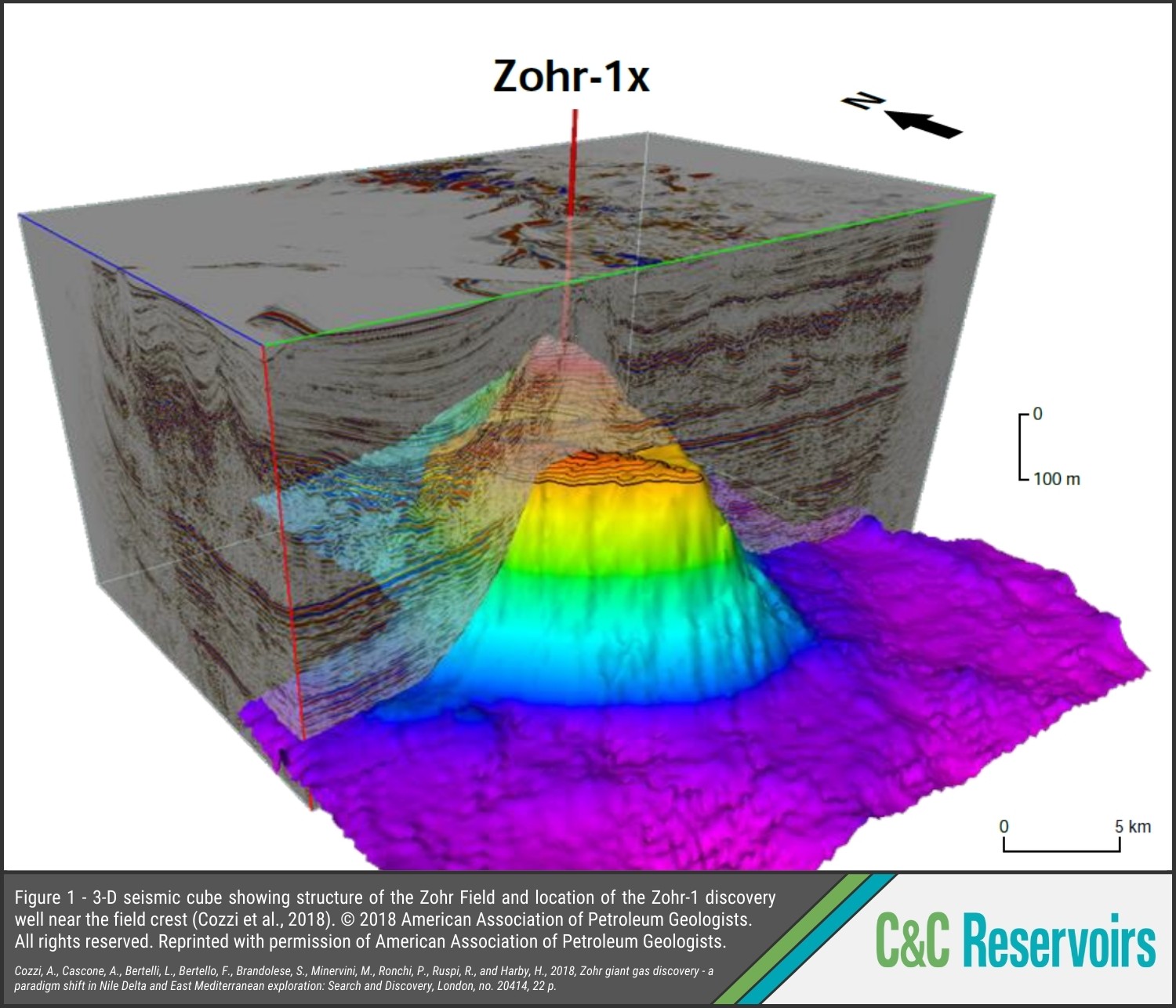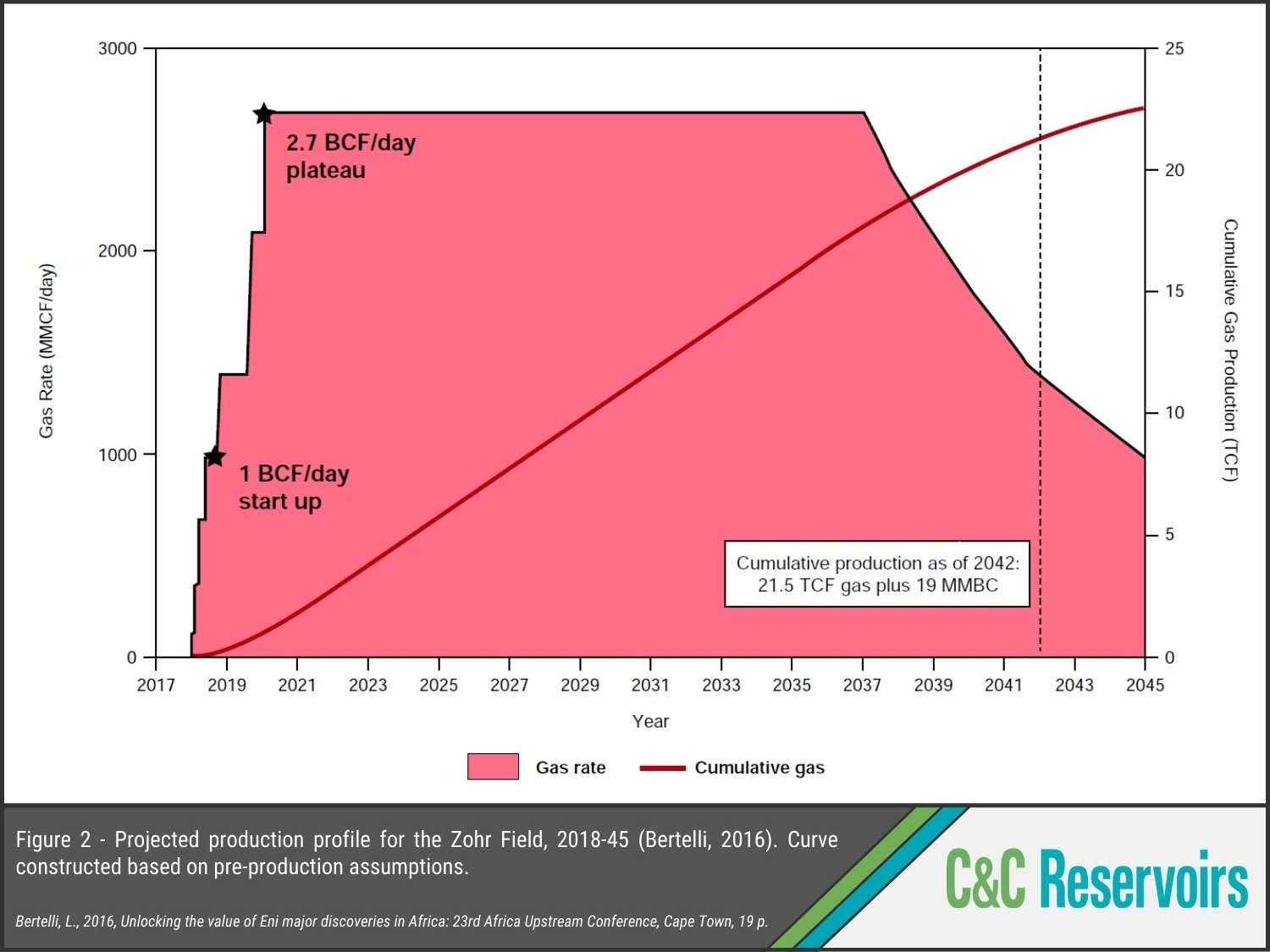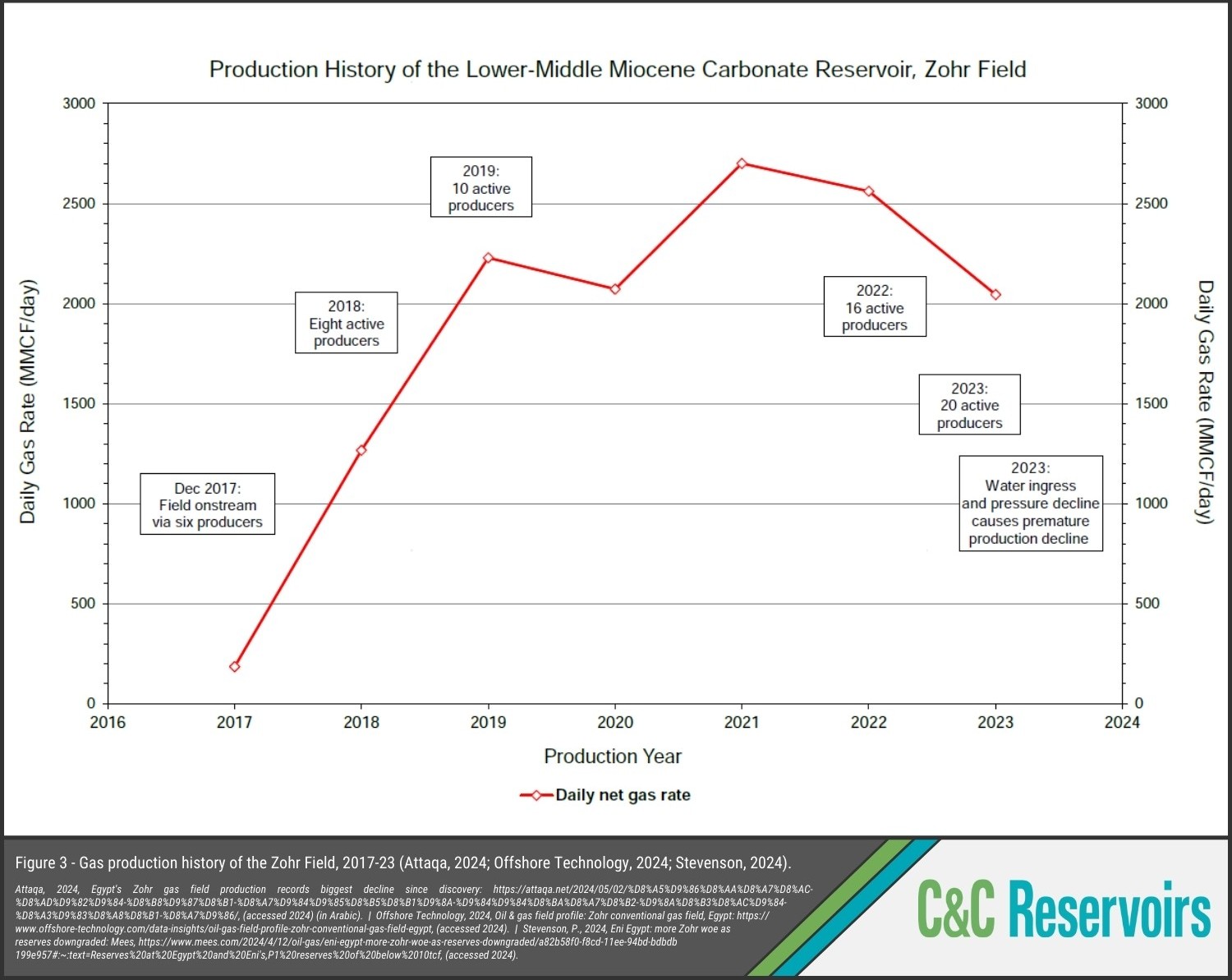The Zohr Field
Analogue Spotlight
The Zohr Field in Egypt, located in the Shorouk Concession, represented a groundbreaking discovery in the Eastern Mediterranean. Discovered within Miocene reef/atoll carbonates (Fig. 1), it unveiled a completely new play for the region. With an initial EUR of >21.5 TCF, Zohr quickly earned the title of the largest gas field in the Mediterranean.
What makes Zohr truly remarkable is the speed of its development – first gas was achieved in an astonishingly short period of only 2.5 years from discovery, setting a new record for a deep-water supergiant gas field.
Production was forecast to continue until at least 2045 (Fig. 2), however, early decline unexpectedly hit the field in 2022. The sharp decline in reservoir pressure, coupled with unexpected water influxes, have been identified as the primary causes behind this production decline. As a result, wells with high water-cuts were shut-in towards the end of 2023, and water treatment facilities had to be expanded to manage the unforeseen water influxes.
These challenges led to a significant downgrade in Zohr’s reserves, with EUR dropping by ~10 TCF. This reduction demoted the field from being the largest gas field in the Mediterranean to third place, behind the nearby Leviathan and Tamar fields.
Daily production is expected to decline even further, and by end-2024, Zohr’s output is forecast to drop to just 1.6 BCF/day – down from its peak of 2.7 BCF/day in 2021 (Fig. 3).



